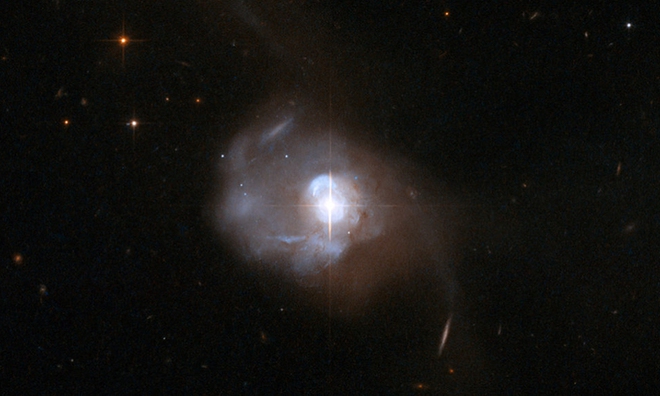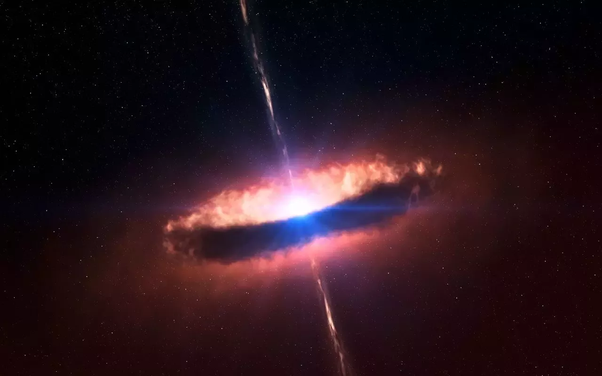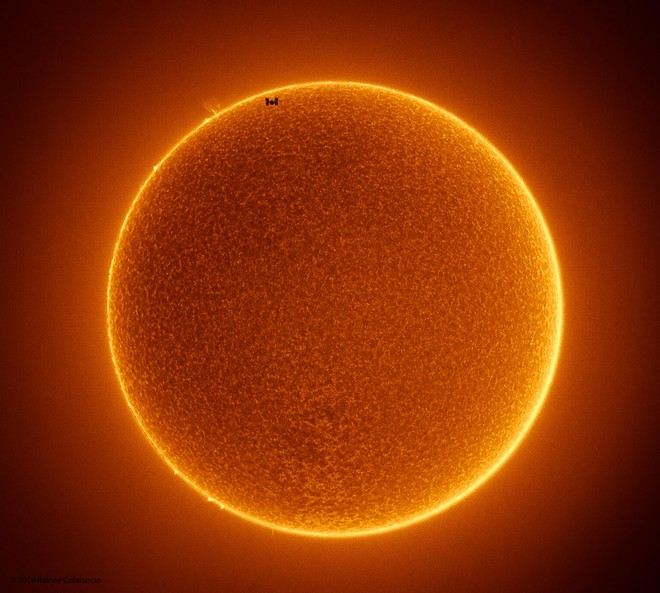Breakthrough: The first discovery of an oxygen molecule outside the Milky Way
- Tram Ho
In a galaxy more than half a billion light-years away, astronomers have discovered oxygen molecules that exist. This is the third time we’ve discovered traces of oxygen outside the Solar System, and the first time we’ve successfully managed to find our eyes outside the Milky Way.

Markarian 231 image of the Hubble space telescope recorded. Photo: NASA.
Oxygen is the third most abundant element in the Universe, after hydrogen and helium. Therefore, its abundance in interstellar clouds is important for understanding the role of molecular clouds in galaxies.
Astronomers are still searching for oxygen molecules in outer space using millimeter wave astronomical technology, capable of detecting radio wavelengths emanating from molecules and spectra, then feces. analyze them with spectroscopy to look for wavelengths absorbed or emitted by the interesting molecules.
But other scientists still discovered very little oxygen in the Universe. That means “there is still a lack of a picture showing how oxygen molecules exist in interstellar space ,” the team of astronomers who conducted the new study said. They are led by Junzhi Wang of the Chinese Academy of Sciences.
Previously, we discovered oxygen in the Orion Nebula, and it was hypothesized that in space, oxygen would bind to hydrogen in the form of ice and cling to cosmic dust particles. The Orion Nebula is yet another star incubator, in which there are many young stars with very large temperatures, most likely this temperature will emit intense radiation which makes the ice sublimate and separate molecules. , releases oxygen.

Orion Nebula
The most recent study is about a special galaxy called Markarian 231. It is 561 million light-years from Earth and is powered by a quasar (Quasar). Quasar is an extremely bright galactic nucleus containing a supermassive black hole at its center. They are the brightest objects in the Universe and Markarian 231 is the galaxy containing the quasars closest to Earth.
In fact, astronomers believe that Markarian 231 may have two supermassive black holes operating at the center and orbiting each other at extremely high speeds.
An active galactic nucleus will boost molecular flows, creating continuous shocks that can release oxygen from water in molecular clouds. The molecular flow in Markarian 231 is very high, so Wang and his colleagues came up with the idea to look for oxygen here.

Quasar is the brightest mysterious object in the universe.
Using a 30 meter radio telescope called IRAM in Spain, they observed the galaxy for four days and obtained several wavelengths. They finally found the spectral trace of oxygen, consistent with the hypothesis.
” With observations deep inside the Markarian 231 galaxy, using IRAM 30 and NOEMA telescopes, we have for the first time discovered oxygen molecules emitting in a galaxy more than half a billion light years from Earth. am, “said the team.
” Oxygen emissions were detected located about 10 kpc (32,615 light-years) from Markarian center 231 due to the interaction between the molecular flow (controlling the active galactic nucleus) and the disk molecular clouds. ” .
The measurements of the group revealed that the amount of oxygen there is more abundant than both hydrogen and about 100 times higher than the oxygen found in the Orion Nebula. Markarian 231 is a galaxy containing many stars, the process of star formation is very intense, so Markarian 231 must have undergone a very strong molecular separation process. An area of the Markarian Galaxy alone is forming about 100 solar masses each year. Our Milky Way is more peaceful, with a rate of star formation ranging from 1 to 2 solar masses per year. (The Sun’s mass is used as a measure of mass, equivalent to the Sun’s weight of about 1,989 × 10 ^ 30 kg).

On the other hand, these findings also contribute to the right direction of astronomers to complete the unfinished overall picture of oxygen formation.
If the results are investigated further, this phenomenon could be used to decipher the formation of oxygen molecules in galaxies and molecular flows from a quasar, the researchers said.
” This discovery of outer space oxygen for the first time provides an ideal tool for more in-depth study of molecular flow, manipulating the active galaxy nucleus, for tens of millions of years .”
The research team concludes: ” Oxygen can be a significant coolant for gas molecules in areas affected by the flow of active galactic nuclei .”
The research has been published in the Journal of Astrophysics.
Refer to ScienceAlert
Source : Genk
